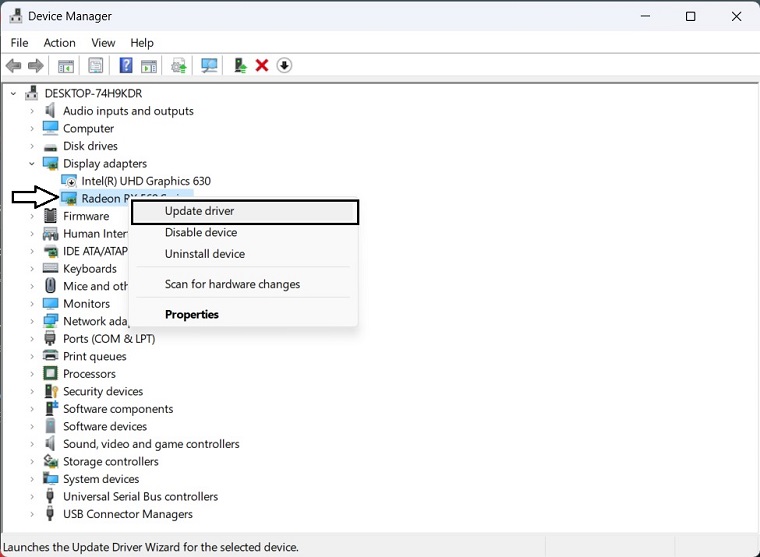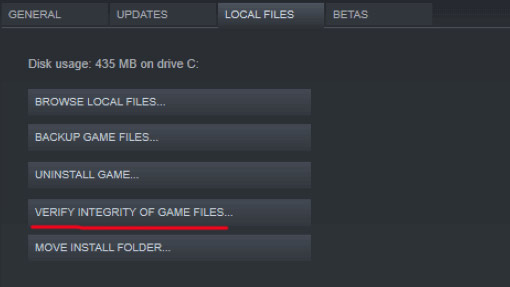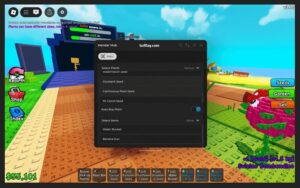If you are experiencing low GPU usage while playing Star Wars Jedi Survivor even on High-end PC, then you’re not alone. This is a common issue reported by many players. It can lead to poor performance, low FPS, and an overall unsatisfactory gaming experience. This problem is mainly caused by outdated or faulty graphics drivers, overclocking, power management settings, or other software conflicts that cause the GPU to not function at its optimal capacity.
Fortunately, there are several effective solutions to fix the low GPU usage issue in Star Wars Jedi Survivor. By updating drivers, adjusting graphical settings, modifying configuration files, or waiting for a patch from EA, players can improve performance and enjoy the game to its fullest potential.
In this article, we will explore these solutions in more detail and help PC gamers get the most out of Star Wars Jedi: Survivor.
How To Fix Star Wars Jedi Survivor Low GPU Usage Issue on PC
If you want to fix your GPU utilization stay below 50% issue, then try
- Restart your PC.
- Update Star Wars Jedi Survivor.
- Update your Windows OS to the latest version.
- Run Star Wars Jedi Survivor as an Administrator.
If the problem persists then apply the below-mentioned solutions:
1. Update GPU Drivers
An outdated display driver is a common culprit for Star Wars Jedi Survivor’s low FPS on your PC. This can prevent the game from launching. Updating your display driver is an effective solution to this problem. To update the GPU drivers, follow the below steps;
- Press Win + X on the keyboard and then click on Device Manager and expand Display adapters.
- Right-click on the graphics card, and click on Update driver.

- Choose Search automatically for drivers and update the driver.
In order to update the GPU driver, NVIDIA and AMD do release game-specific updates that you can download and install on your PC. But it takes time and if you are a newbie who doesn’t have skills then you might end up downloading the wrong drivers.
So, we suggest downloading Driver Easy software to update your graphics card driver quickly and efficiently. Unlike the device manager, it can update all drivers with a single click and has a broader database for detecting the latest drivers.
2. Force Use the Dedicated GPU
In case your PC has two GPUs, then switch to the dedicated GPU on which you want to play the game. This can help you to resolve your issue. To do so, just follow the below steps.
Nvidia:
- Right-click on the desktop screen.
- Open Nvidia Control Panel.
- Go to 3D Settings.
- Click on Manage 3D Settings.
- Open Program Settings.
- Select Star Wars Jedi Survivor from the list.
- Select High-Performance Nvidia Processor as the preferred graphics processor for this program.
- Make sure to save changes and reboot the PC.
AMD:
- Right-click on the blank desktop screen.
- Open Radeon Settings.
- Head over to Additional Settings.
- Go to Preferences.
- Click on Power.
- Click on Switchable Graphics Application Settings.
- Select Star Wars Jedi Survivor from the list (If the game is not visible, select Add Application to include the game)
- Select High Performance from Graphics Settings.
- Finally, reboot the PC to apply changes.
3. Tweak the Game’s Config File
If updating drivers doesn’t work, you can try tweaking the game’s config file. This file can be found in the game’s installation directory.
Look for the file called “swgameconfig.cfg” and open it in a text editor. Look for the line that says “D3D12Enable” and change its value to “0“. This will force the game to use DirectX 11 instead of DirectX 12, which can sometimes help with the low GPU usage problem.
4. Change the In-Game Graphics Settings
The in-game graphics settings can also cause the low GPU usage issue. If the settings are too low, the game may not utilize the GPU fully. So, increase the graphics settings in-game to utilize the GPU fully. Here are a few in-game graphics settings that can fix your GPU utilization stay below 50% issue.
- Texture Quality: Lowering the texture quality can reduce the load on your GPU, which may help to increase its usage. However, lowering the texture quality may also reduce the visual fidelity of the game.
- Shadow Quality: Lowering the shadow quality can also help to reduce the load on your GPU. Shadows can be demanding on a graphics card, especially if they are rendered at a high resolution.
- Anti-Aliasing: Turning off or lowering the anti-aliasing settings can also help to increase GPU usage. Anti-aliasing smooths out jagged edges in the game’s graphics, but it can also be demanding on the GPU.
- V-Sync: Turning off V-Sync can help to increase GPU usage, as it removes the frame rate cap that V-Sync imposes. However, this can also lead to screen tearing.
5. Close Unnecessary Background Tasks
If your computer doesn’t have enough RAM or CPU power, your GPU may not be able to run at full capacity. So, just close unnecessary programs.
- Press Ctrl + Shift + Esc to open the Task Manager.
- Check and identify any programs that are not required for the game.
- Right-click on the program and select “End task“.
- Launch Star Wars Jedi Survivor and check if the issue is resolved.
6. Enable High-Performance Mode
To enable high-performance mode in display settings in Windows 10, follow these steps:
- Right-click on the desktop and select “Display settings.”
- In the Display settings menu, scroll down and click on “Graphic settings.”
- Find Star Wars Jedi Survivor in the list below or click on the browse button and navigate to Jedi Survivor.
- Click on Star Wars Jedi Survivor and then click on Options.
- Check on High performance.
- Click on the Save button to apply your changes.
7. GPU Drivers In Performance Mode
Setting GPU drivers in performance mode can help improve performance in Star Wars Jedi Survivor by optimizing the graphics card settings for high performance. Here’s how you can do it:
- Right-click on the desktop and select “NVIDIA Control Panel” or “AMD Radeon Settings,” depending on your graphics card.
- In the control panel, navigate to the “Manage 3D settings” or “Gaming” category.
- Find the “Power management mode” or “GPU Workload” option and set it to “Prefer maximum performance” or “Compute,” respectively.
- Save your changes and exit the control panel.
8. Use a Performance Monitoring Tool
If you’re still experiencing low GPU usage even on High-end PCs in Star Wars Jedi Survivor, one way to identify the source of the issue is to use third-party software to monitor your PC’s performance. Tools such as MSI Afterburner, and HWMonitor can give you real-time information on CPU, GPU, and RAM usage, as well as temperatures and clock speeds.
This can help you determine if there are any bottlenecks or overheating issues causing the FPS drops. You can also use these tools to adjust settings such as fan speeds or overclocking to improve performance.
By monitoring your system’s performance and making adjustments accordingly, you may be able to mitigate or even eliminate the FPS drops you’re experiencing in Star Wars Jedi Survivor.
9. Enable Game Mode
Enabling Game Mode should prioritize system resources for gaming applications, including Star Wars Jedi Survivor, and potentially improve performance.
- Go to your PC Settings.
- In the Settings menu, select the “Gaming” category.
- In the “Gaming” menu, click on the “Game Mode” option in the left-hand sidebar.
- Toggle on the “Game Mode” switch to enable it.
- If desired, you can also enable the “Hardware-accelerated GPU scheduling” option by toggling its switch on.
- Close the Settings menu.
10. Enable Hardware Accelerated GPU Scheduling
It’s also worth recommending enabling the Hardware Accelerated GPU Scheduling option on your Windows computer (if available). To do so:
- Press the Windows + I keys on the keyboard to open Windows Settings.
- Now, go to System > Click on Display > Head over to Multiple Displays.
- Select Graphics settings > Turn on the Hardware-accelerated GPU scheduling option.
- Finally, reboot the system to apply changes.
11. Disable Overclocking
If your GPU is overclocked, disable it and run the game on default settings. To disable overclocking and fix the low GPU usage issue in Star Wars Jedi: Survivor on PC, you can follow these steps:
- Access your computer’s BIOS settings by restarting your computer and pressing the key indicated on your screen (often Del or F2) to enter the BIOS setup.
- Look for the option to disable overclocking or reset the BIOS settings to default. This may be labeled as “Load Optimized Defaults,” “Reset to Default,” or a similar option.
- Save the changes and exit the BIOS settings. Your computer will restart.
- Open Star Wars Jedi: Fallen Order and check the GPU usage to see if the issue has been resolved.
However, keep in mind that overclocking your GPU can cause instability and performance issues in some games, including Star Wars Jedi: Fallen Order. Disabling overclocking can help ensure stable and consistent performance.
12. Verify the Integrity of Your Game Files
You need to verify the game file integrity because if your game files are missing, corrupt, or damaged, Star Wars Jedi Survivor crashing becomes an unavoidable problem. This method has been proven effective by many players and hopes it works for you too. To do so, just follow the below steps;
- Open Steam > Click on Library > Go to Home.
- Right-click on Star Wars Jedi Survivor > Click on Properties.
- Go to the Local files tab > Click on Verify integrity of game files.

If you’re playing on Epic Games, then follow these steps:
- Start the Epic Games app.
- Select the “Library” tab.
- Left-click on the three dots at the bottom right of the Star Wars Jedi: Survivor icon.
- Select “Verify” and “Verify Integrity of Game Cache“.





